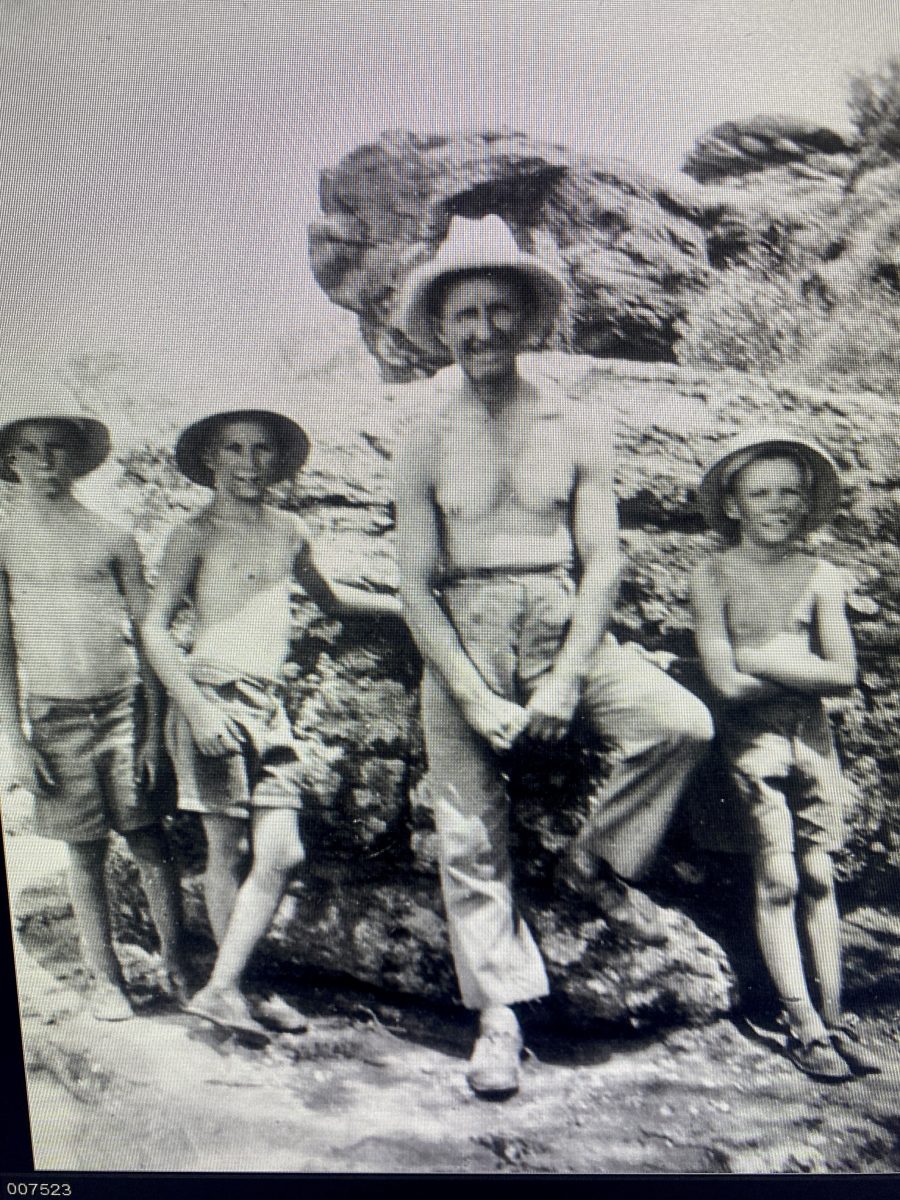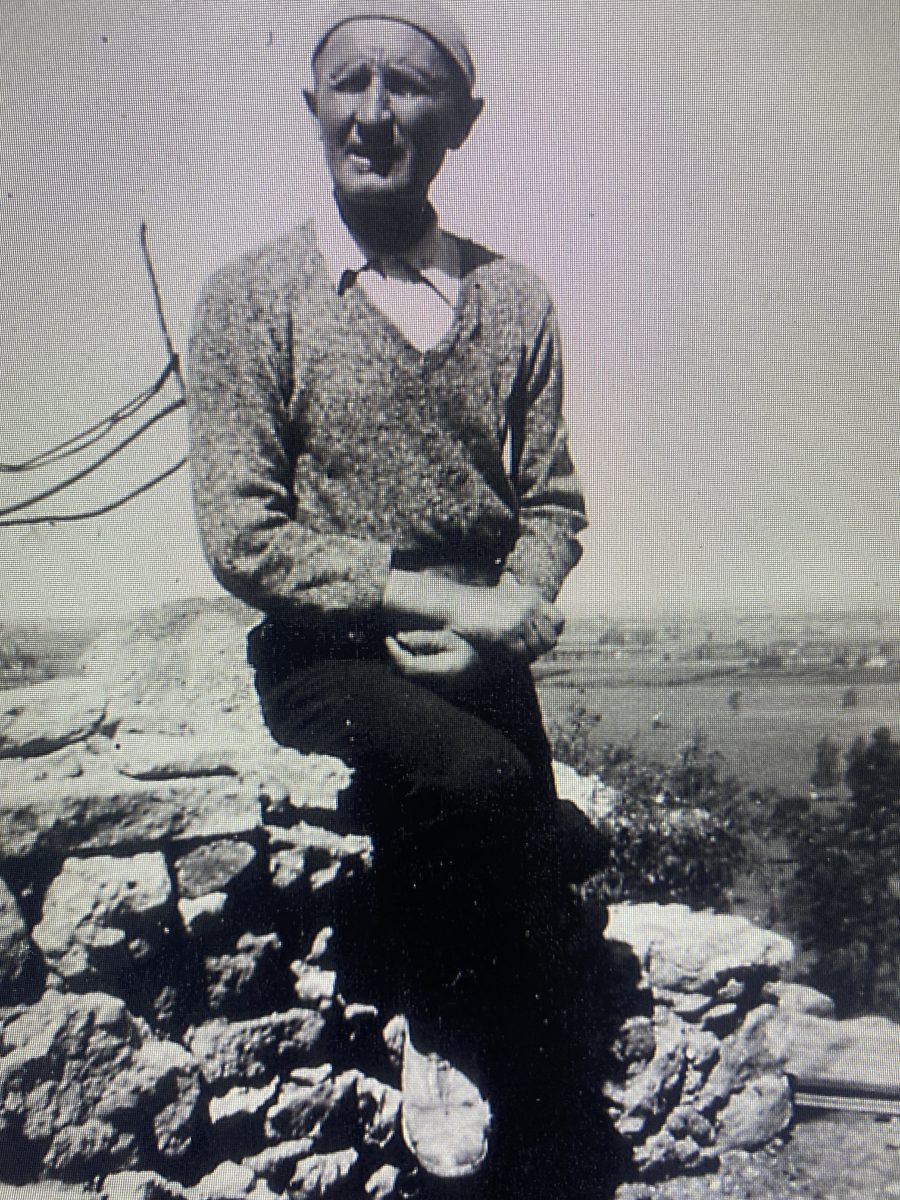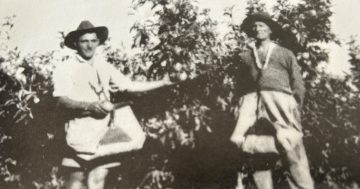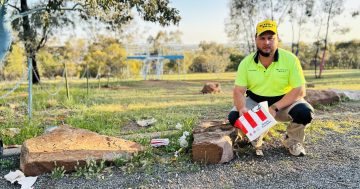
Jim Fielder, Bill Fielder, Valerio Ricetti and Nevill Aspinall outside Hermit’s Cave in the summer of 1939. Photo: Griffith and District Pioneers Series 1.
Griffith is home to one of Australia’s most unusual tourist attractions — Hermit’s Cave and Scenic Hill lookout — which the website Aussie Bucket List encourages people to see.
The so-called cave was actually a series of rock shelters, terraced gardens, a chapel, steps, paths and murals built by the reclusive but brilliant Italian immigrant Valerio Ricetti, who lived there by himself for much of the period between 1929 and 1952. It’s one of the few known hermit dwellings in Australian history.
“A lot has been written about Ricetti, but there are also a lot of disagreements about how he lived his life,” Griffith Genealogical and Historical Society member Clive Polkinghorne says.
After migrating to Australia from the Lombardy region of Italy, most recorded histories of Ricetti suggest his unorthodox life was shaped by bad experiences with women.
He arrived in Port Pirie in South Australia and then went to work in the mines near Broken Hill, where he was reportedly left heartbroken by a barmaid he loved. He then had a further sequence of bad experiences, including being robbed in a brothel, retaliating and ending up in jail. He therefore became “disillusioned with society and wanted no further part of it,” wrote Dan Slater in an article for National Geographic.
The Italian then headed east, and by 1929 found himself on the outskirts of Griffith, where a thunderstorm forced him to take shelter at Scenic Hill. It was there that he found some tools and used his skills as a stonemason to build his own utopia, where he would mostly live in solitude for the next two decades. It was rumoured that he did most of the building at night to avoid being seen and to minimise the chance of human contact.
History buff John Robinson recalls seeing the outside of Ricetti’s home as a child when he went for picnics on Scenic Hill.
“He had the most wonderful garden … I remember seeing a great big banana bush. This was unusual as bananas were prohibited from Griffith at the time because of the risk of fruit fly.
“What was remarkable was there was no water source on the top of the hill when he lived, so he would’ve had to walk down to the main canal to get drinking water and to water his garden.”

Valerio Ricetti in 1944. Photo: Griffith Genealogical & Historical Society.
Much of Ricetti’s impressive creations have now been destroyed. The walking path to the remnants of his home and garden are unstable, making it difficult to explore the history. Visitors are advised to take good walking shoes.
Nevertheless, Scenic Hill remains a focal point for everyone who comes to Griffith, says Mr Robinson.
“It was known as ‘Lover’s Milk’,” he said.
“It was the place where couples would go, I actually proposed to my wife up there.”
More information on the life of Valerio Ricetti can be found at the Italian museum at Griffith’s Pioneer Park. The book From Broken Hill to Scenic Hill: the true story and part of Griffith’s history of the Scenic Hill hermit : Valerio Ricetti, 1898-1952 by Petronio Ceccato also provides further detail.
















